Is it safe to drive to Cabo San Lucas, Mexico? Absolutely! For LGBTQ+ travelers planning a trip to this beautiful destination, driving can be a fantastic way to explore the region at your own pace. Gaymexico.net is here to guide you through everything you need to know about driving safely and enjoyably in Cabo, including safe travel tips, cultural insights, and LGBTQ+ friendly spots. This comprehensive guide ensures you can confidently navigate the roads of Mexico, discovering hidden gems and experiencing the vibrant culture while staying safe and connected. Ready to explore with peace of mind? Let’s get started!
1. Is Driving in Cabo San Lucas Safe?
Is driving in Cabo San Lucas safe? Yes, driving in Cabo San Lucas is generally safe for tourists, including LGBTQ+ travelers, but requires awareness and caution. Cabo San Lucas is a popular tourist destination in Mexico, known for its beautiful beaches and vibrant nightlife. While it’s generally safe, it’s important to take necessary precautions and be informed about local driving conditions. Being proactive about safety ensures a pleasant and secure experience.
Understanding Local Driving Conditions
Driving conditions in Cabo can differ from those in the United States or Canada. Some key points to keep in mind include:
- Road Quality: Roads are generally well-maintained, especially in tourist areas. However, be prepared for occasional potholes or unmarked speed bumps (“topes”), particularly in rural areas.
- Driving Habits: Local driving habits can be more aggressive than what you may be used to. Be cautious of tailgating, passing on shoulderless roads, and drivers ignoring traffic signals.
- Traffic: Traffic can be heavy, especially during peak hours in the tourist corridor between Cabo San Lucas and San Jose del Cabo. Patience is key, and it’s wise to plan your trips accordingly.
- Navigation: Don’t solely rely on GPS apps like Google Maps, especially in remote areas. They may not always be accurate, and cell service can be unreliable.
Essential Safety Tips for LGBTQ+ Travelers
To ensure a safe and enjoyable driving experience in Cabo San Lucas, consider the following:
- Drive Defensively: Always be alert and anticipate the actions of other drivers.
- Use Signals: Signal your intentions clearly and in advance.
- Seatbelts: Always wear your seatbelt. It’s the law and crucial for your safety.
- Avoid Distractions: Do not use your cell phone while driving, and avoid drinking and driving.
- Parking: Be mindful of where you park. Avoid parking where the curb is painted red or in handicapped spaces. Fines for these violations can be steep.
- Travel Light: To minimize attention, avoid flashing expensive jewelry or driving flashy cars.
- Keep Documents Handy: Always have your driver’s license, car registration, and Mexican insurance documents with you.
- Avoid Night Driving: If possible, avoid driving at night, especially in unfamiliar areas.
- Stay Informed: Keep up-to-date with local news and any potential safety concerns.
- Respect Local Laws: Be aware of and respect local laws and customs. This includes traffic laws and general conduct.
- Avoid Confrontations: If you encounter aggressive drivers or uncomfortable situations, it’s best to avoid confrontation and drive away.
- Secure Valuables: Keep valuables out of sight to prevent theft.
- Know Emergency Numbers: Familiarize yourself with local emergency numbers.
Navigating Potential Challenges
While Cabo San Lucas is generally safe, it’s wise to be aware of potential challenges and how to handle them:
- Traffic Stops: If you are stopped by the police, remain calm and polite. Ask for the officer’s name and badge number. Only provide necessary documents (driver’s license, registration, insurance).
- Accidents: In the event of an accident, contact your insurance company immediately. If there are injuries, contact the local authorities.
- Road Hazards: Be aware of road hazards such as potholes, speed bumps, and livestock. Drive at a safe speed, especially on unfamiliar roads.
Resources for LGBTQ+ Travelers
Here are some resources that can help LGBTQ+ travelers stay informed and safe:
- Travel Guides: Websites and apps like gaymexico.net offer information on LGBTQ+-friendly establishments and events in Cabo San Lucas.
- LGBTQ+ Organizations: Local and international LGBTQ+ organizations can provide resources and support.
- Consulates: Keep the contact information for your country’s consulate in Mexico in case you need assistance.
By staying informed, being prepared, and taking basic safety precautions, you can have a safe and enjoyable driving experience in Cabo San Lucas.
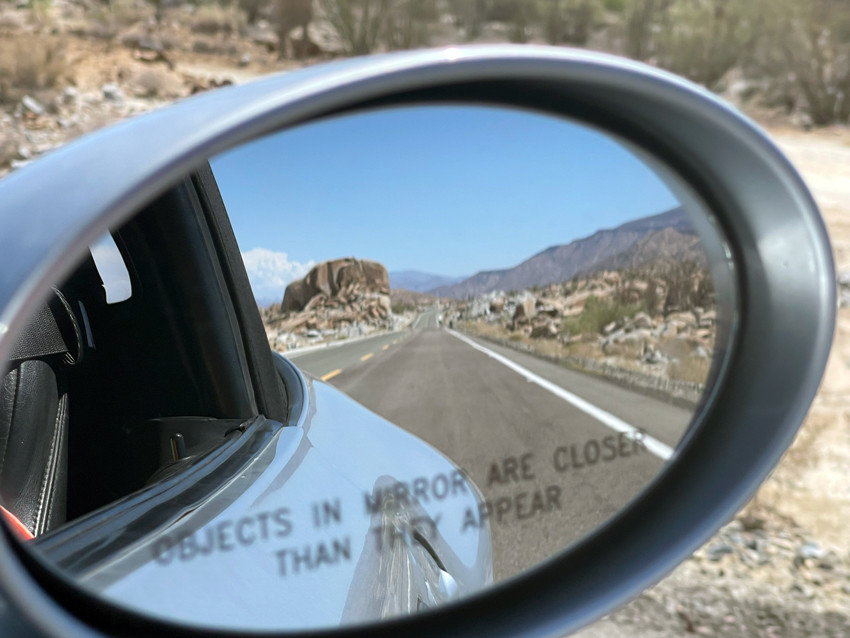 Driving through the Baja peninsula offers stunning views and a sense of adventure
Driving through the Baja peninsula offers stunning views and a sense of adventure
2. Can I Use Uber in Los Cabos?
Can I use Uber in Los Cabos? Yes, Uber is available in Los Cabos and is a convenient transportation option for getting around the area. Uber offers a practical and economical alternative to traditional taxis, often providing better rates and more reliable service. For LGBTQ+ travelers, this can be particularly advantageous, offering a private and direct way to reach various destinations.
Availability and Accessibility
Uber operates in most areas of Los Cabos, including popular tourist spots, hotels, and the airport. The service is generally readily available, and the Uber app you use in your home country will work seamlessly in Los Cabos. This makes it easy to request a ride and navigate the city.
Advantages of Using Uber
- Cost-Effective: Uber is typically more affordable than traditional taxis, saving you money on transportation costs.
- Convenience: Requesting a ride is simple and can be done directly from your smartphone. You can track your ride in real-time and see the estimated arrival time.
- Reliability: Uber drivers are generally reliable and provide a consistent level of service. The app also allows you to rate your driver, ensuring accountability.
- Language Barrier: With Uber, you don’t need to worry about language barriers, as the app handles the communication and directions.
- Direct Transportation: Uber provides direct transportation to your destination, without the need to stop at multiple locations.
- Safety Features: The Uber app includes safety features such as ride tracking and the ability to share your ride details with friends or family.
Potential Challenges and Solutions
- Hotel Restrictions: Some hotels in Los Cabos have longstanding relationships with taxi companies and may not allow Uber drivers onto their property. In these cases, you may need to meet your Uber driver at the hotel gate or a nearby location.
- Airport Pickups: Uber pickups at the airport may be restricted. Check the latest regulations or meet your driver at a designated off-site location.
- Surge Pricing: During peak hours or special events, Uber may implement surge pricing. Be aware of this and consider alternative transportation options if necessary.
- Reliability in Remote Areas: In more remote areas, Uber availability may be limited. Plan accordingly and consider renting a car or using a taxi if Uber is not readily available.
Tips for Using Uber in Los Cabos
- Verify Driver Identity: Before getting into the car, verify the driver’s identity and license plate to ensure it matches the information on the app.
- Share Ride Details: Use the Uber app to share your ride details with a friend or family member.
- Check Ratings: Check the driver’s rating and read reviews before accepting a ride.
- Communicate Clearly: If you need to communicate with your driver, use the Uber app’s messaging feature or speak clearly and politely.
- Be Patient: During busy times, Uber availability may be limited, so be patient and allow extra time for your ride.
- Confirm Pickup Location: Confirm the pickup location with your driver to avoid confusion, especially in crowded areas.
- Be Aware of Your Surroundings: As with any transportation service, be aware of your surroundings and trust your instincts.
- Use UberEats: If you’re hungry and prefer to stay in, UberEats is available in most areas of Los Cabos.
Alternative Transportation Options
- Taxis: Taxis are readily available in Los Cabos, but they are typically more expensive than Uber. Negotiate the fare before getting into the taxi to avoid surprises.
- Rental Cars: Renting a car provides flexibility and convenience, allowing you to explore the region at your own pace.
- Shuttle Services: Many hotels offer shuttle services to and from the airport and other popular destinations.
- Public Transportation: Public transportation is available, but it may not be the most convenient option for tourists.
Uber and LGBTQ+ Safety
For LGBTQ+ travelers, using Uber can provide an added sense of security:
- Privacy: Uber offers a private mode of transportation, avoiding potential discomfort or discrimination from taxi drivers.
- Direct Route: The app ensures a direct route to your destination, minimizing the risk of being taken to unwanted or unsafe areas.
- Accountability: The rating system encourages drivers to provide respectful and professional service to all passengers.
By using Uber wisely and being aware of potential challenges, LGBTQ+ travelers can enjoy a convenient and safe transportation option in Los Cabos.
3. Can I Drive My US- or Canadian-Plated Car in Los Cabos?
Can I drive my US- or Canadian-plated car in Los Cabos? Yes, it is perfectly legal to drive cars from the United States and Canada in Los Cabos. Many tourists and residents bring their vehicles to enjoy the flexibility and convenience of having their own transportation. However, there are specific regulations and considerations to keep in mind.
Legality and Requirements
- Temporary Importation Permit (TIP): You do not need a Temporary Importation Permit (TIP) for your vehicle if you are only driving in Baja California, which includes Los Cabos. A TIP is required if you plan to travel to mainland Mexico.
- Vehicle Registration: Ensure your vehicle registration is current and valid.
- Driver’s License: Your driver’s license must match the state or province where your vehicle is registered.
- Insurance: Mexican auto insurance is required by law. Your US or Canadian insurance policy will not be valid in Mexico.
Mexican Auto Insurance
Purchasing Mexican auto insurance is essential and can be done online or at the border. Coverage options typically include:
- Liability: Covers damages or injuries you may cause to third parties.
- Collision: Covers damage to your vehicle in the event of an accident.
- Theft: Protects against vehicle theft.
- Vandalism: Covers damage to your vehicle from vandalism.
- Roadside Assistance: Provides assistance with towing, flat tires, and other emergencies.
Who Can Drive the Vehicle
- Legal Owners: Only the legal owners of the vehicle can drive it in Mexico.
- Mexicans: Legally, Mexican citizens cannot drive foreign-plated cars. This is an important consideration if you plan to lend your car to friends or acquaintances.
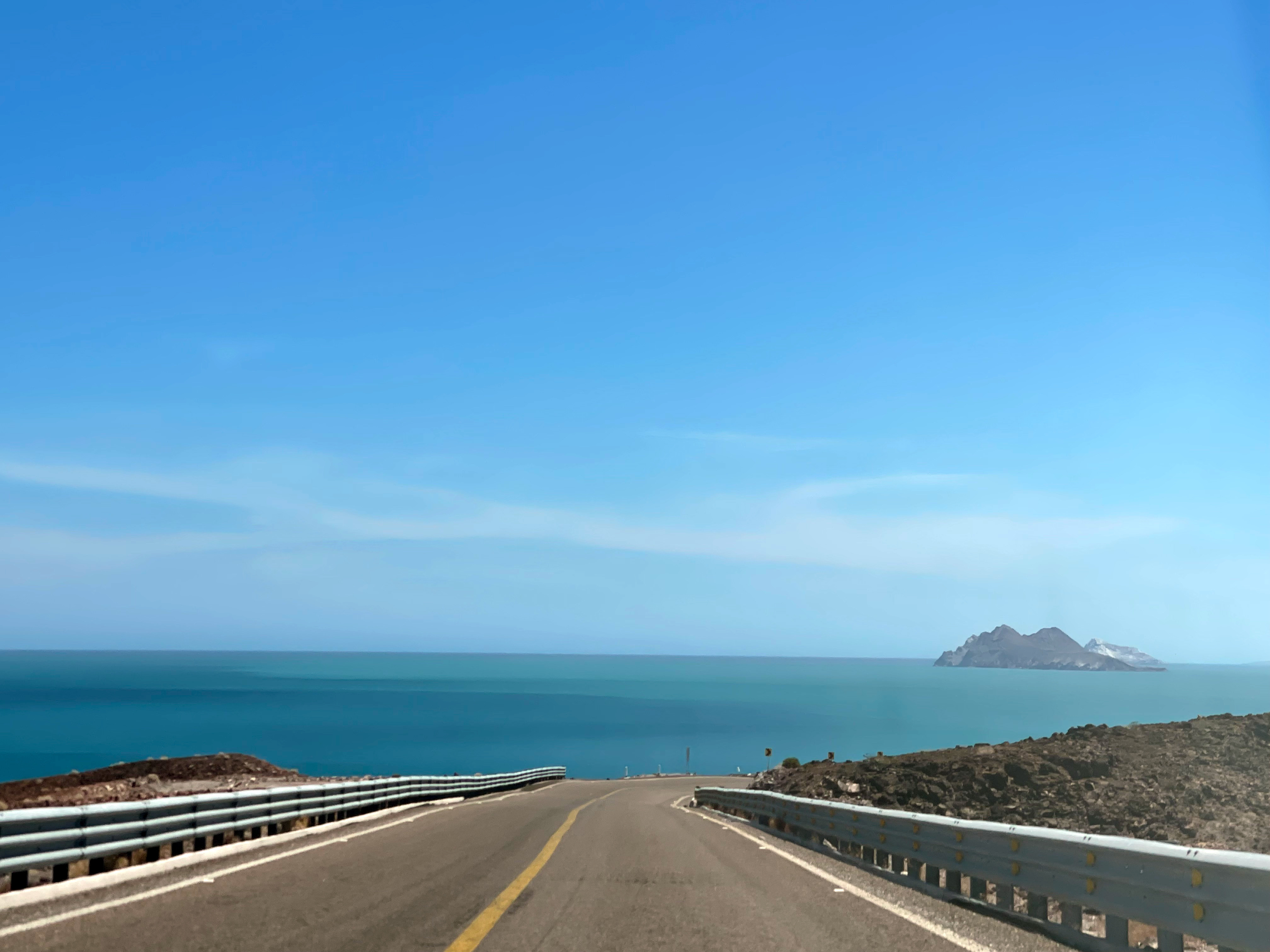 Panoramic ocean view while driving the Baja, showcasing the beauty of the region
Panoramic ocean view while driving the Baja, showcasing the beauty of the region
Tips for Driving a Foreign-Plated Car
- Keep Documents Handy: Always keep your vehicle registration, driver’s license, and Mexican insurance documents in your car.
- Drive Defensively: Be aware of local driving habits and drive defensively.
- Avoid Leaving the Baja Peninsula: If you do not have a TIP, avoid driving to mainland Mexico.
- Renew Registration: Keep your vehicle registration up-to-date to avoid any legal issues.
- Be Prepared for Inspections: Be prepared for potential vehicle inspections by Mexican authorities.
South Dakota License Plates
You may notice many vehicles in Los Cabos with South Dakota license plates. This is a legal strategy used by expats and frequent visitors to avoid certain Mexican vehicle import and registration requirements.
- South Dakota Registration: South Dakota has lenient vehicle registration laws and does not require residents to live in the state.
- Out-of-State Registration: As long as fees are paid and the registration is properly renewed, it is a legitimate way to register your vehicle in Mexico.
- Facilitation Services: Some businesses in Los Cabos offer services to help with South Dakota registration for a fee, but you can also do it yourself if you have a US address for receiving documents.
Considerations for LGBTQ+ Travelers
- Discreet Travel: While Los Cabos is generally accepting, discreet travel can help avoid unwanted attention.
- Safety: Ensure your vehicle is well-maintained and reliable for long drives.
- Awareness: Be aware of your surroundings and avoid drawing unnecessary attention to yourself.
Alternative Options
- Shipping Your Vehicle: If you plan to stay in Los Cabos for an extended period, shipping your vehicle may be a convenient option.
- Buying a Car in Mexico: Buying a car with Mexican plates is another option, but it requires a Mexican driver’s license.
By following these guidelines and being aware of the regulations, you can legally and safely drive your US- or Canadian-plated car in Los Cabos, enjoying the freedom and flexibility it provides.
4. Can I Ship My Vehicle to Los Cabos?
Can I ship my vehicle to Los Cabos? Yes, shipping your vehicle to Los Cabos is a viable option, especially for extended stays. Shipping can be more convenient than driving the long distance, saving wear and tear on your car and allowing you to avoid the potential challenges of a road trip. For LGBTQ+ travelers planning an extended vacation or relocation, this can provide a hassle-free way to have personal transportation upon arrival.
Benefits of Shipping Your Vehicle
- Convenience: Shipping eliminates the need to drive the long distance from the US or Canada to Los Cabos.
- Reduced Wear and Tear: Avoids putting miles and wear on your vehicle during a long road trip.
- Safety: Reduces the risks associated with driving through unfamiliar areas.
- Time Savings: Saves you several days of travel time, allowing you to focus on other aspects of your trip.
- Comfort: Avoids the physical strain of a long drive.
Shipping Companies and Services
Several reputable companies offer vehicle shipping services to and from Los Cabos. These companies typically provide:
- Door-to-Door Service: Pick up your vehicle from your home in the US or Canada and deliver it to your location in Los Cabos.
- Port-to-Port Service: Transport your vehicle between ports, requiring you to drop off and pick up the vehicle at the respective ports.
- Insurance Coverage: Offer insurance to protect your vehicle during transit.
- Customs Assistance: Help with the necessary customs paperwork and procedures.
- Tracking: Provide tracking services so you can monitor the progress of your shipment.
Steps to Ship Your Vehicle
- Research Shipping Companies: Look for reputable companies with experience in shipping vehicles to Mexico. Check online reviews and ratings.
- Obtain Quotes: Get quotes from multiple companies to compare prices and services.
- Prepare Your Vehicle: Clean your vehicle and remove any personal belongings. Ensure it is in good working condition.
- Complete Paperwork: Fill out all necessary paperwork, including customs forms and shipping contracts.
- Arrange Pickup: Schedule a pickup date with the shipping company.
- Track Your Shipment: Monitor the progress of your shipment using the tracking information provided by the company.
- Customs Clearance: Work with the shipping company to clear your vehicle through Mexican customs.
- Pickup Your Vehicle: Once your vehicle has cleared customs, arrange to pick it up at the designated location in Los Cabos.
Costs and Fees
The cost of shipping a vehicle to Los Cabos can vary depending on several factors:
- Shipping Distance: The distance between the origin and destination.
- Vehicle Size: The size and weight of your vehicle.
- Shipping Method: Door-to-door service is typically more expensive than port-to-port service.
- Insurance Coverage: The amount of insurance coverage you choose.
- Customs Fees: Mexican customs fees and taxes.
- Fuel Surcharges: Fluctuations in fuel prices can affect shipping costs.
Documentation Required
To ship your vehicle to Los Cabos, you will typically need the following documents:
- Vehicle Title: Original vehicle title.
- Vehicle Registration: Current vehicle registration.
- Driver’s License: Copy of your driver’s license.
- Passport: Copy of your passport.
- Bill of Sale: If you recently purchased the vehicle.
- Customs Forms: Various customs forms required by Mexican authorities.
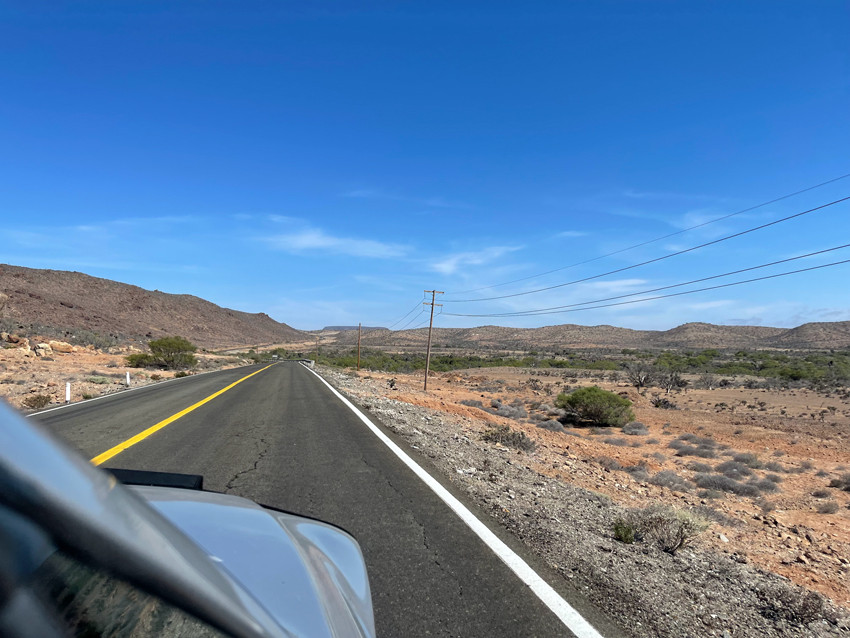 Safe driving in Baja requires attention and preparation
Safe driving in Baja requires attention and preparation
Considerations for LGBTQ+ Travelers
- Plan Ahead: Shipping your vehicle requires careful planning and coordination. Start the process well in advance of your trip.
- Research Companies: Thoroughly research shipping companies to ensure they are reputable and reliable.
- Insurance: Ensure your vehicle is adequately insured during transit.
- Customs: Be prepared for the customs process and any potential delays.
- Local Laws: Familiarize yourself with local laws and regulations regarding vehicle ownership and operation in Mexico.
Alternative Options
- Driving Your Vehicle: Driving your vehicle to Los Cabos is an alternative, but it requires more time and effort.
- Renting a Car: Renting a car in Los Cabos is a convenient option for short-term stays.
- Buying a Car in Mexico: Purchasing a car in Mexico may be a suitable option for long-term residents.
By carefully considering the benefits, costs, and requirements, you can make an informed decision about whether shipping your vehicle to Los Cabos is the right choice for you.
5. What Is It Like to Drive Down the Baja Peninsula?
What is it like to drive down the Baja Peninsula? Driving down the Baja Peninsula is an unforgettable adventure, offering stunning landscapes, unique cultural experiences, and a sense of freedom. The journey from the U.S. border to Cabo San Lucas spans over 1,300 miles, presenting both challenges and rewards. For LGBTQ+ travelers seeking an off-the-beaten-path experience, this road trip can be an incredible way to connect with the natural beauty and authentic charm of Baja California.
The Allure of the Baja Road Trip
- Stunning Scenery: The Baja Peninsula boasts diverse landscapes, including rugged mountains, vast deserts, pristine beaches, and turquoise waters.
- Cultural Immersion: Experience the rich culture of Baja California, with its charming towns, historic missions, and welcoming locals.
- Adventure: Opportunities for outdoor activities abound, including surfing, hiking, fishing, and exploring hidden gems.
- Freedom: Enjoy the flexibility to travel at your own pace and discover hidden treasures along the way.
- Unforgettable Memories: Create lasting memories as you embark on this epic road trip.
Key Highlights Along the Route
- Ensenada: Located about 90 miles south of the U.S. border, Ensenada is a vibrant port city known for its lively boardwalk, seafood markets, and the famous La Bufadora marine geyser.
- Guerrero Negro: Home to the world’s largest salt mine and a sanctuary for gray whales, Guerrero Negro offers unique natural attractions.
- Mulegé: A charming oasis town with a historic mission and delicious chocolate clams.
- Loreto: The oldest town in Baja California, Loreto features stunning azure coves and a beautifully preserved mission.
- Todos Santos: An artsy town known for its vibrant culture, historic buildings, and the legendary Hotel California.
Driving Conditions and Safety Tips
- Road Quality: The main highways are generally well-maintained, but be prepared for occasional potholes and unmarked speed bumps (“topes”).
- Remote Areas: Some stretches of the road are sparsely populated, so it’s important to be self-sufficient and prepared for emergencies.
- Driving at Night: Avoid driving at night, as visibility can be poor and road hazards can be difficult to see.
- Gas Stations: Fill up your gas tank whenever possible, as gas stations can be few and far between in remote areas.
- Spare Tire: Carry a spare tire and know how to change it.
- Supplies: Bring plenty of water, food, and other essential supplies.
- Mexican Auto Insurance: Purchase Mexican auto insurance before you begin your trip.
- Cell Service: Cell service can be unreliable in some areas, so consider bringing a satellite phone or a GPS device.
- Emergency Contacts: Keep a list of emergency contacts and local authorities.
Suggested Itinerary
- Day 1-2: Ensenada. Explore the city, visit La Bufadora, and enjoy the local cuisine.
- Day 3-4: Guerrero Negro. Visit the salt mine and take a whale-watching tour.
- Day 5-6: Mulegé. Relax in the oasis town and savor fresh chocolate clams.
- Day 7-8: Loreto. Explore the historic mission and swim in the azure coves.
- Day 9-10: Todos Santos. Discover the town’s vibrant art scene and visit the Hotel California.
- Day 11-12: Cabo San Lucas. Arrive in Cabo San Lucas and enjoy its beautiful beaches and nightlife.
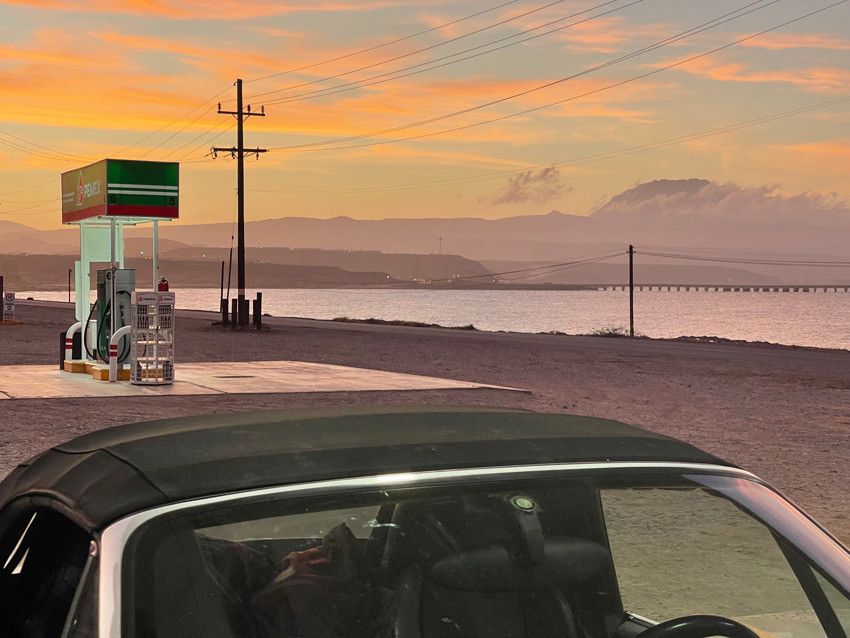 Santa Rosalia, a charming stop on the way to Los Cabos, showcasing unique architecture
Santa Rosalia, a charming stop on the way to Los Cabos, showcasing unique architecture
Considerations for LGBTQ+ Travelers
- Research LGBTQ+-Friendly Areas: While Baja California is generally safe, some areas may be more accepting than others. Research LGBTQ+-friendly accommodations and establishments along the way.
- Discreet Travel: Consider traveling discreetly, especially in more conservative areas.
- Safety: Stay aware of your surroundings and trust your instincts.
- Plan Ahead: Plan your route and accommodations in advance, especially during peak travel seasons.
- Resources: Utilize online resources and travel guides to find LGBTQ+-friendly information and support.
Tips for an Enjoyable Road Trip
- Slow Down: Take your time and enjoy the journey.
- Be Flexible: Be prepared to adjust your itinerary as needed.
- Embrace the Unexpected: Be open to new experiences and unexpected adventures.
- Connect with Locals: Engage with locals and learn about their culture and traditions.
- Capture Memories: Take plenty of photos and videos to document your journey.
Alternative Options
- Flying to Cabo San Lucas: If you prefer a quicker and more convenient option, consider flying directly to Cabo San Lucas.
- Taking a Bus: Bus services are available, but they can be slow and uncomfortable.
- Joining a Tour: Consider joining a guided tour for a hassle-free experience.
Driving down the Baja Peninsula is an adventure of a lifetime, offering the opportunity to experience the raw beauty and authentic culture of Baja California. By being prepared, staying safe, and embracing the unexpected, you can create memories that will last a lifetime.
6. What Insurance Do I Need?
What insurance do I need for driving in Los Cabos? When driving in Los Cabos, it’s essential to have the right insurance coverage to protect yourself and your vehicle. Mexican auto insurance is required by law, and your U.S. or Canadian insurance policy will not be valid in Mexico. For LGBTQ+ travelers, ensuring you have comprehensive coverage provides added peace of mind, allowing you to focus on enjoying your trip.
Why Mexican Auto Insurance Is Necessary
- Legal Requirement: Mexican law requires all drivers to have valid auto insurance.
- U.S. and Canadian Policies Not Valid: Your U.S. or Canadian auto insurance policy will not be recognized in Mexico.
- Financial Protection: Protects you from financial liabilities in case of an accident.
- Peace of Mind: Provides peace of mind knowing you are covered in case of an unforeseen event.
Types of Coverage to Consider
- Liability Coverage: Covers damages or injuries you may cause to third parties in an accident. This is the most basic and essential coverage.
- Collision Coverage: Covers damage to your vehicle if you are involved in an accident, regardless of who is at fault.
- Theft Coverage: Protects you if your vehicle is stolen.
- Vandalism Coverage: Covers damage to your vehicle caused by vandalism.
- Medical Payments Coverage: Pays for medical expenses for you and your passengers if you are injured in an accident.
- Uninsured Motorist Coverage: Protects you if you are involved in an accident with an uninsured driver.
- Roadside Assistance: Provides assistance with towing, flat tires, jump starts, and other roadside emergencies.
Factors Affecting Insurance Costs
- Coverage Level: The more coverage you choose, the higher the premium.
- Vehicle Type: The make and model of your vehicle can affect the cost of insurance.
- Driving Record: Your driving record may impact the premium.
- Trip Duration: The length of your trip will influence the cost of the policy.
- Deductible: The amount you pay out-of-pocket before the insurance coverage kicks in.
Where to Buy Mexican Auto Insurance
- Online: Many reputable companies offer Mexican auto insurance online. This is often the most convenient option.
- At the Border: You can purchase insurance at the border, but it may be more expensive and less convenient.
- Local Agents: Some insurance agents in the U.S. or Canada specialize in Mexican auto insurance.
Tips for Buying Mexican Auto Insurance
- Shop Around: Compare quotes from multiple companies to find the best price and coverage.
- Read the Fine Print: Carefully review the policy details, including coverage limits and exclusions.
- Verify the Insurer: Ensure the insurance company is reputable and licensed to operate in Mexico.
- Understand the Claims Process: Familiarize yourself with the claims process in case you need to file a claim.
- Keep Documents Handy: Keep a copy of your insurance policy in your vehicle at all times.
Specific Considerations for LGBTQ+ Travelers
- Choose Comprehensive Coverage: Opt for comprehensive coverage to protect yourself from a wide range of potential risks.
- Discreetness: When purchasing insurance, consider using a discreet email address and avoiding unnecessary personal information.
- Safety: Ensure the insurance policy includes roadside assistance to provide support in case of emergencies.
Steps to Take in Case of an Accident
- Stay Calm: Remain calm and assess the situation.
- Ensure Safety: Check for injuries and ensure the safety of everyone involved.
- Contact Authorities: Call the local authorities to report the accident.
- Exchange Information: Exchange information with the other driver, including name, address, insurance details, and vehicle information.
- Contact Your Insurer: Contact your Mexican auto insurance company to report the accident and file a claim.
- Document the Scene: Take photos of the accident scene, including vehicle damage and any relevant details.
- Cooperate with Authorities: Cooperate with the authorities and provide them with the necessary information.
- Seek Legal Advice: If necessary, seek legal advice from a qualified attorney.
By understanding the importance of Mexican auto insurance and choosing the right coverage, you can drive with confidence in Los Cabos and enjoy your trip to the fullest.
7. Can I Drive a Mexican-Plated Car?
Can I drive a Mexican-plated car in Los Cabos? Yes, you can drive a Mexican-plated car in Los Cabos, but there are specific requirements you need to meet to do so legally. This can be a convenient option for long-term residents or those who frequently visit the area. For LGBTQ+ travelers considering this, understanding the rules and regulations is crucial for a smooth and trouble-free experience.
Requirements for Driving a Mexican-Plated Car
- Mexican Driver’s License: To legally drive a Mexican-plated car, you must have a valid Mexican driver’s license.
- Vehicle Registration: The vehicle must be properly registered in Mexico.
- Insurance: The vehicle must have valid Mexican auto insurance.
How to Obtain a Mexican Driver’s License
- Residency Requirement: You typically need to be a legal resident of Mexico to obtain a Mexican driver’s license.
- Application: Visit the local transit authority (Tránsito) office.
- Documents: Provide the required documents, which may include:
- Proof of residency (e.g., utility bill, rental agreement)
- Passport and visa (if applicable)
- Birth certificate
- CURP (Clave Única de Registro de Población) – a unique identification code for residents of Mexico
- Previous driver’s license (if applicable)
- Exam: Pass a written and/or practical driving exam.
- Payment: Pay the required fees.
- Issuance: Receive your Mexican driver’s license.
How to Register a Vehicle in Mexico
- Residency Requirement: You typically need to be a legal resident of Mexico to register a vehicle.
- Purchase: Purchase a vehicle from a dealership or private seller in Mexico.
- Documents: Provide the required documents, which may include:
- Bill of sale
- Vehicle title
- Proof of residency
- Passport and visa (if applicable)
- CURP
- Mexican driver’s license
- Inspection: Have the vehicle inspected.
- Payment: Pay the required registration fees and taxes.
- Registration: Receive your vehicle registration documents and license plates.
Insurance Requirements
- Mexican Auto Insurance: Ensure the vehicle is covered by a valid Mexican auto insurance policy.
- Coverage: Choose the appropriate level of coverage to protect yourself from potential liabilities.
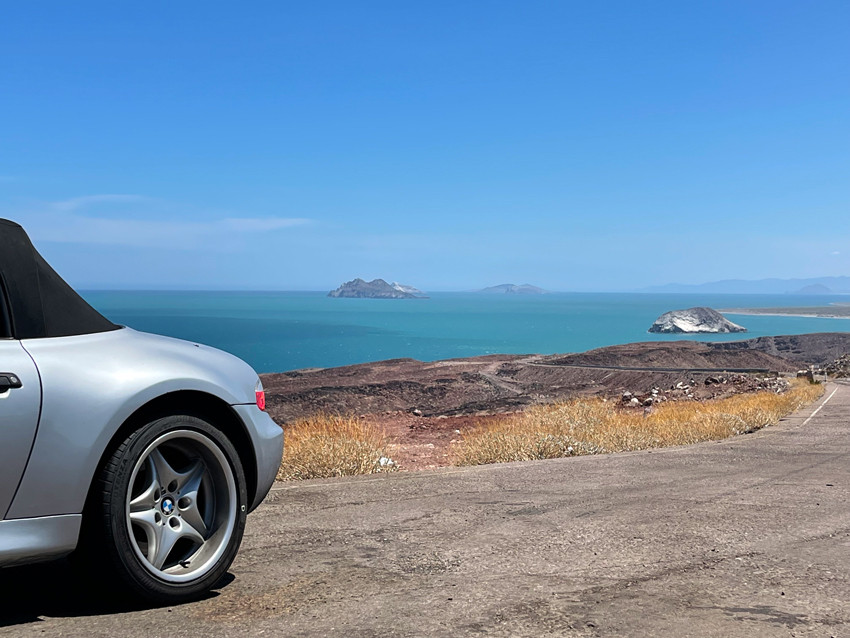 Views from the Baja, showcasing the scenic drives and beautiful landscapes
Views from the Baja, showcasing the scenic drives and beautiful landscapes
Considerations for LGBTQ+ Travelers
- Legal Residency: Obtaining legal residency in Mexico may be necessary to meet the requirements for a Mexican driver’s license and vehicle registration.
- Safety: Ensure the vehicle is well-maintained and reliable.
- Awareness: Be aware of local laws and regulations regarding vehicle ownership and operation.
- Discreetness: Consider using a discreet email address and avoiding unnecessary personal information when dealing with legal and administrative processes.
Alternative Options
- Driving a U.S. or Canadian-Plated Car: If you are not a legal resident of Mexico, you may be able to drive a U.S. or Canadian-plated car temporarily.
- Renting a Car: Renting a car is a convenient option for short-term stays.
- Using Uber or Taxis: Uber and taxis are readily available in Los Cabos.
Tips for Driving a Mexican-Plated Car
- Keep Documents Handy: Always keep your Mexican driver’s license, vehicle registration, and insurance documents in your car.
- Obey Traffic Laws: Obey all traffic laws and regulations.
- Be Prepared for Inspections: Be prepared for potential vehicle inspections by Mexican authorities.
- Maintain Vehicle: Keep your vehicle well-maintained and in good working condition.
By understanding the requirements and following the guidelines, you can legally and safely drive a Mexican-plated car in Los Cabos.
8. What’s Up With All the South Dakota License Plates?
What’s up with all the South Dakota license plates in Los Cabos? You may have noticed a significant number of vehicles in Los Cabos sporting South Dakota license plates. This is not due to a disproportionate number of South Dakotans vacationing in the area, but rather a legal loophole that allows residents and frequent visitors to register their vehicles in South Dakota, even if they don’t live there full-time. For LGBTQ+ travelers, understanding this practice can provide insights into navigating vehicle registration in Mexico.
The South Dakota Loophole
- Non-Residency Registration: South Dakota allows non-residents to register vehicles in the state.
- No Residency Requirement: There is no requirement to live in South Dakota to register a vehicle there.
- Low Fees: South Dakota has relatively low vehicle registration fees compared to other states.
- No Vehicle Inspection: South Dakota does not require vehicle inspections for registration.
- Mail-In Registration: Registration can be done by mail, making it convenient for non-residents.
Why People Use South Dakota Plates in Mexico
- Avoid Import Taxes: Registering in South Dakota allows people to avoid paying high Mexican import taxes on their vehicles.
- Simplified Registration: The registration process in South Dakota is simpler and less bureaucratic than in Mexico.
- Flexibility: It allows people to keep their U.S.-plated vehicles in Mexico without having to become legal residents.
- Cost Savings: The lower registration fees and taxes can result in significant cost savings.
How to Register a Vehicle in South Dakota as a Non-Resident
- Obtain a South Dakota Address: You will need a U.S. address in South Dakota to receive registration documents and license plates. This can be a friend’s address, a P.O. Box, or a mail forwarding service.
- Complete the Application: Fill out the required application forms.
- Provide Documentation: Provide copies of your vehicle title, driver’s license, and proof of insurance.
- Pay Fees: Pay the required registration fees and taxes.
- Mail the Application: Mail the application and supporting documents to the South Dakota Department of Revenue.
- Receive Registration: Receive your registration documents and license plates in the mail.
Legality and Compliance
- Legal Hack: Using South Dakota plates is a legal strategy as long as you comply with all South Dakota registration requirements.
- Proper Renewal: Ensure your registration is properly renewed each year.
- Vehicle Location: The South Dakota Department of Revenue does not care where your vehicle is located.
- Insurance: You still need to have valid Mexican auto insurance, regardless of where your vehicle is registered.
Considerations for LGBTQ+ Travelers
- Privacy: Using a mail forwarding service can help protect your privacy.
- Legality: Ensure you comply with all South Dakota registration requirements to avoid legal issues.
- Awareness: Be aware that some people may view this practice as controversial or unethical.
Alternative Options
- Registering Your Vehicle in Mexico: If you are a legal resident of Mexico, you can register your vehicle in Mexico.
- Importing Your Vehicle: You can legally import your vehicle into Mexico, but this can be a complex and expensive process.
- Renting a Car: Renting a car is a convenient option for short-term stays.
Tips for Using South Dakota Plates
- Keep Documents Handy: Always keep copies of your South Dakota registration documents in your car.
- Obey Traffic Laws: Obey all traffic laws and regulations in Mexico.
- Be Prepared for Questions: Be prepared to answer questions from Mexican authorities about your vehicle registration.
By understanding the South Dakota loophole and following the guidelines, you can legally and safely use South Dakota plates on your vehicle in Los Cabos.
Navigating the roads of Cabo San Lucas offers a blend of adventure and discovery, and gaymexico.net is your dedicated resource for ensuring a safe, informed, and enjoyable journey. From understanding local driving conditions to securing the right insurance, we provide the insights you need to confidently explore this beautiful destination. Whether you’re shipping your car, considering a Baja road trip, or simply using Uber to get around, remember that preparation and awareness are key. Join our community on gaymexico.net to access the latest tips, connect with fellow LGBTQ+ travelers, and plan your unforgettable Mexican adventure today. Your next great experience starts here.
FAQ: Driving in Cabo San Lucas for LGBTQ+ Travelers
Here are some frequently asked questions about driving in Cabo San Lucas, with a focus on the needs and concerns of LGBTQ+ travelers:
- **Is it safe for LGBTQ+ individuals to drive in Cabo San Lucas
